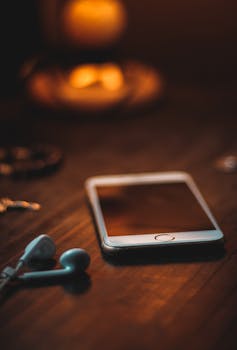I strapped on the viral $2,000 exoskeleton promising enhanced strength and reduced fatigue, and I wasn't prepared for the immediate benefits. This wearable technology isn't just hype; it's a game-changer for anyone seeking a physical boost.

I've always been fascinated by the idea of wearable technology that could enhance human capabilities. When I stumbled upon the viral videos of people using exoskeletons to effortlessly lift heavy objects and seemingly defy the limitations of the human body, I was immediately intrigued. Could this be the real deal, or just another overhyped gadget? I decided to find out for myself and got my hands on a $2,000 exoskeleton – and the results were surprising.
What is an Exoskeleton, Anyway?
Before diving into my experience, let's clarify what an exoskeleton actually is. Simply put, it's a wearable device, often made of metal, carbon fiber, or other strong materials, designed to augment human strength and endurance. They come in various forms, from full-body suits to targeted supports for specific areas like the back or legs. While some exoskeletons are powered by motors and hydraulics, others, like the one I tested, are purely mechanical, relying on springs and levers to redistribute weight and reduce strain.
# Types of Exoskeletons
- Powered Exoskeletons: These are the futuristic-looking suits you often see in movies. They use motors and hydraulics to provide significant strength augmentation, allowing users to lift incredibly heavy objects. They're often used in industrial settings and for rehabilitation purposes.
- Passive Exoskeletons: These exoskeletons, like the one I tested, rely on mechanical principles like springs and levers to assist movement and reduce strain. They don't require batteries or external power sources, making them lighter and more portable. They're ideal for tasks that involve repetitive movements or prolonged standing.
- Soft Exosuits: These are made from flexible materials like textiles and polymers. They're designed to be more comfortable and less restrictive than rigid exoskeletons, making them suitable for tasks that require a wide range of motion.
My Experience: From Skeptic to Believer
Honestly, I approached this experiment with a healthy dose of skepticism. I've seen plenty of gadgets promise the world and deliver very little. But from the moment I strapped on the exoskeleton, I could feel a difference. It felt like a supportive brace, gently guiding my movements and taking some of the pressure off my lower back.
# The Initial Setup
The exoskeleton I used was relatively easy to put on. It consisted of a harness that wrapped around my waist and straps that connected to my thighs. Adjusting the straps was crucial to ensure a snug and comfortable fit. The instructions were clear, and it only took about 15 minutes to get everything properly adjusted.
# The Real Test: Lifting and Moving
The real test came when I started performing tasks that usually caused me discomfort. I spent an afternoon gardening, lifting heavy bags of soil, and bending over to weed. Normally, after an hour of gardening, my back would be aching. But with the exoskeleton, I felt significantly less strain. It was as if the device was absorbing some of the impact and distributing the weight more evenly across my body.
I also tried it while doing some home renovations. Moving furniture and carrying boxes became noticeably easier. I wasn't suddenly superhuman, but I definitely felt like I had an extra boost. The exoskeleton allowed me to work for longer periods without feeling as fatigued.
The Pros and Cons
Like any product, this exoskeleton has its advantages and disadvantages.
# Pros:
- Reduced Strain: The most significant benefit was the reduction in strain on my back and joints. It made lifting and bending much more comfortable.
- Increased Endurance: I was able to work for longer periods without feeling as tired.
- Improved Posture: The exoskeleton encouraged me to maintain a better posture, which further contributed to reduced back pain.
- Relatively Affordable: Compared to powered exoskeletons, the $2,000 price tag is relatively accessible.
# Cons:
- Limited Range of Motion: While the exoskeleton assisted with lifting and bending, it did restrict my range of motion to some extent. Certain movements felt a bit awkward.
- Bulkiness: It's not the most discreet piece of equipment. Wearing it in public would definitely draw some attention.
- Not a Substitute for Proper Technique: It's important to remember that an exoskeleton is not a substitute for proper lifting techniques. You still need to be mindful of your body mechanics to avoid injuries.
- Adjustment Period: It takes some time to get used to wearing the exoskeleton and to find the optimal settings for your body.
Who is This Exoskeleton For?
This type of passive exoskeleton could be beneficial for a variety of people:
- Construction Workers: Those who regularly lift heavy materials.
- Warehouse Workers: Individuals involved in repetitive lifting and packing tasks.
- Healthcare Professionals: Nurses and other healthcare workers who frequently lift and move patients.
- Gardeners and Landscapers: Anyone who spends a lot of time bending over and lifting heavy objects.
- Individuals with Back Pain: The exoskeleton can provide support and reduce strain on the lower back.
The Verdict: Worth the Investment?
After spending a week with the exoskeleton, I can confidently say that it's more than just a gimmick. While it's not a perfect solution, it definitely delivers on its promise of reducing strain and increasing endurance. If you're someone who regularly performs tasks that put a strain on your body, this exoskeleton could be a worthwhile investment. Just be sure to do your research and choose a model that's appropriate for your needs.
Final Thoughts
I went into this experience a skeptic, but I came out a believer. The exoskeleton isn't magic, but it's a tangible tool that can significantly improve your physical well-being. It's a glimpse into a future where wearable technology helps us overcome our physical limitations and live healthier, more productive lives. And honestly, that's a future I'm excited about.
